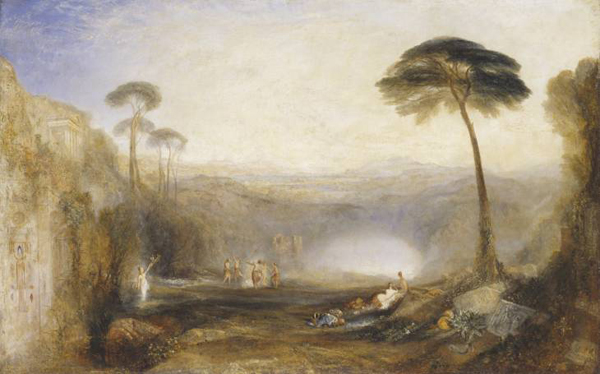"Who does not know Turner’s picture of the Golden Bough? The scene, suffused with the golden glow of imagination in which the divine mind of Turner steeped and transfigured even the fairest natural landscape, is a dream-like vision of the little woodland lake of Nemi—“Diana’s Mirror,” as it was called by the ancients."
Frazer, The Golden Bough (1890)
Here, the Sibyl of Cumae holds high a sickle with which she has cut the bough that will guide Aeneas to the underworld, where he is to meet the ghost of his father. The dancing Fates, like the snake in the foreground, hint at the mysteries that the hero will encounter. Turner actually depicts Lake Avernus in Campania, the entrance to the underworld.
The subject is taken from Virgil's Aeneid (VI.200-207). Aeneas has come to Cumae to consult the Sibyl, who tells him that he can enter the underworld only if he offers to Proserpina a golden bough.
"A tree's deep shade conceals a bough whose leaves and pliant twigs are all of gold, a thing sacred to Juno of the lower world. The whole grove shelters it, and thickest shade in dusky valleys shuts it in. And yet no one may enter hidden depths below the earth unless he picks this bough, the tree's fruit, with its foliage of gold."
The Golden Bough (1834) is by J. M. W. Turner and in the Tate Britain (London).
Reference: The Aeneid (1981) translated by Robert Fitzgerald.
